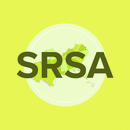Manuscript Preparation Guidelines for Journal of Rural Social Sciences
This document provides details on formatting requirements for manuscripts submitted to the Journal of Rural Social Sciences.
The Journal of Rural Social Sciences uses the American Sociological Association (ASA) manuscript style, except where otherwise noted. (See American Sociological Association. 2014. American Sociological Association Style Guide, 5th ed. Washington, DC: American Sociological Association.)
General Guidelines for Preparing Your Manuscript
- Do not include a title page. (A title page will be added to your paper by the editors.)
- Begin your manuscript with title, abstract (150 words or less), and keywords. Do not include any author-identifying information.
- Do not include page numbers, headers, or footers. These will be added by the editors.
- Write your article in English.
- Submit your manuscript, including tables, figures, appendices, etc., as a single Microsoft Word file.
- Page size should be 8.5 x 11 inches.
- Set top and bottom margins at 1 inch and left and right margins at 1.5. Please be sure that your tables and figures fit within these margins.
- Use a single column layout with left margins justified and double spaced text.
- Font:
- Main Body—12 pt. Arial
- Endnotes—10 pt. Arial
- If figures are included, use high-resolution figures, preferably encoded as encapsulated PostScript (eps).
- Proofread your manuscript.
- When possible, there should be no pages where more than a quarter of the page is empty space.
- Limit all copy, including abstract, manuscript text, figures, tables, and references, to no longer than 30 pages.
Abstract
Limit the abstract to 150 words. The abstract should describe: (a) the article topic (in one sentence, if possible); (b) the purpose, thesis, or organizing concept of the article and the scope of the article; (c) the sources of data used, if appropriate; and (d) conclusions, recommendations, and implications. Authors should make their abstracts interesting so as to motivate people to read their articles.Keywords
List 3 to 5 keywords for your article, in alphabetical order, separated by commas. Example: civic engagement, community capitals, povertyEndnotes
Use endnotes only to explain material that cannot be justified for inclusion in text or tables. Number the notes consecutively, using Arabic numerals, beginning with endnote 1. Also use endnotes to indicate “Personal Communications”.Figures and Tables
Please be sure that your tables and figures fit within the margins. It is the author's responsibility to provide online publication-ready, computer-generated graphics suitable for publication. JRSS will not convert graphics to other formats or perform other adjustments such as cropping. Follow the American Sociological Association (ASA) style for tables.
- Figures may take the form of charts, maps, or photographs.
- Figure numbers and titles (as well as any relevant notes) should be included in the text, in 12-point font.
- Colors should be distinct, and the number of colors kept to a minimum.
- All figures should have a material impact on the content of the article and should not be used for decorative purposes.
- Request approval from the Editor to include more than 8 graphics in your manuscript.
- Depending on sentence construction, the citation will appear as follows: Bowen and Finegan (1999) or (Bowen and Finegan 1999). If a page number is used, it follows the publication year and is set off by a colon: Kennedy and Silverman (1985:276).
- Enclose a series of citations within parentheses, separated by semicolons. Place multiple citations in alphabetical order: (Clemente and Kleiman 1997; Kennedy and Silverman 1995; Lee 1992).
- For works by two authors, cite both last names.
- For three authors, cite all three last names in the first citation in the text: (Carr, Smith, and Jones 1992a:366); thereafter use only the first author's surname, followed by "et al." in the citation: (Carr et al. 1992a:366).
- If a work has more than three authors, use "et al." in the first citation and in all subsequent citations.
- Except as noted above in the case of three authors, make subsequent citations of a source exactly as cited the first time.
- If an author has two citations in the same year, distinguish them by attaching a or b to the year in both the text and the references: (Theodori 1995a, 1995b).
- Cite manuscripts in chronological order, with earliest dates first.
- Footnotes are NOT to be used for citations.
- List surname, first name, and middle initial (if any) of the first author. If there are additional authors, list their first name, middle initial (if any) and last name in order. Follow by year of publication and then the rest of the citation. When initials are used (i.e. when first names are not available for a given author, when referencing an edited volume), there should be a single space between the initials (D. A. Dillman).
- For two or more references by the same author(s), list them in order of the year of publication.
- Capitalize first letters of major words in titles of articles. Enclose titles of journal articles and book chapters in quotation marks. Please use traditional quotation marks as opposed to prime and double prime symbols (this also applies to the body of the article).
- Italicize the name of the journal in which the article appears.
- Include the volume number, issue number, and page numbers of the journal. None of these are italicized.
- Italicize book titles. Capitalize first letters of major words in titles.
- In book references, include the location and name of the publisher. Name the city in which the publisher is located and always use standard two-letter abbreviations for names of states (e.g. IL, TN, NJ, NY). For international publishers, include the city and country (e.g. Oxford, UK). For dual-city publications, include both cities using “and” (e.g. Cambridge, MA and Oxford, UK: Oxford University Press).
- DOIS: Include the Digital Object Identifier (DOI) number for journal articles when available.
- If a book is a second or later edition, include that information.
Headings
Use headings to organize the article. Three heading levels are generally adequate. The first-level heading is left-justified and uses all caps. The second-level heading is left-justified, italicized, and all words except prepositions (of, into, between, among, through), articles (a, an, the), and coordinating conjunctions (and, but, or) are capitalized. The third-level heading is indented, italicized, and only the first letter of the first word is capitalized. The third-level heading is followed with a period and is included as part of the text.Reference Citations in Text
Following ASA style, cite all references in the text, where appropriate, by the author's last name, publication year, and (when you quote directly from a work or refer to a specific passage) page number(s).Qualitative Data
Qualitative pieces should detail both methods and analysis within the text of the manuscript. Quotes from qualitative respondents do not, however, need to be referenced in the text in the same way as literature sources. Instead, authors may write something like, “One respondent noted that….” Or “A recurring theme within the analysis was…” It should be clear whether each statement is part of the literature review or the analysis.Personal Communications
Personal communications should be referenced using endnotes, and should include the date of communication, as well as the person with whom the communication took place, either by position or name, as appropriate. Personal communications are not to be included in the reference section.The Reference Section
A “References” section should follow the body of the article. It should include only those sources cited in the article. Correctly formatting citations using ASA style is the responsibility of the author. Arrange the references in alphabetical order. Type the first line of each reference item flush to the left-hand margin; use hanging indent function for the remainder of the reference entry. Supply complete information on each reference. There is no space between the issue number and page number (e.g. Journal of Rural Social Sciences 24(3):21-46). Below are a set of general guidelines:EXAMPLES OF REFERENCE SECTION ENTRIES
Article in journal:
Miller, Stephen K., D. Clayton Smith, and Larry S. Ennis. 2006. “The Effects of Race, Place, Class, and Gender on Instructional Strategies in Kentucky's Seventh Grade Science Classes: Individual and School Level Analyses.” Southern Rural Sociology 21(2):65-88.
Journal article from an online resource with a digital object identifer (DOI)
Pearson, A. Fiona. 2010. “Real Problems, Virtual Solutions: Engaging Students Online.” Teaching Sociology 38(3):207-214. doi:10.1177/0092055X10370115.
Book:
Lobao, Linda M. 1990. Locality and Inequality. Albany, NY: SUNY Press.
Edited Book:
Wright, Wynne, and Gerad Middendorf, eds. 2007. The Fight Over Food: Producers, Consumers, and Activists Challenge the Global Food System. University Park, PA: The Pennsylvania State University Press.
Article or chapter in an edited volume:
Zuiches, James J. 1982. "Residential Preferences." Pp. 247-63 in Rural Society in the U.S.: Issues for the 1980s, edited by D. A. Dillman and D. J. Hobbs. Boulder, CO: Westview. (for editors use initials instead of full first names).
Two publications by same author in same year:
Theodori, Gene L. 2004a. “Exploring the Association between Length of Residence and Community Attachment: A Research Note.” Southern Rural Sociology 20(1):107-122.
Theodori, Gene L. 2004b. “Community Attachment, Satisfaction, and Action.” Journal of the Community Development Society 35(2):73-86.
Government document:
Beale, Calvin L. 1975. The Revival of Population Growth in Nonmetropolitan America. U.S. Department of Agriculture, ERS-605. Washington, DC: U.S. Government Printing Office.
Dissertation:
Smith, Douglas Clayton. 1996. "Power and Process in the Siting of Municipal Solid Waste Incinerators." PhD Dissertation, Department of Sociology, The Pennsylvania State University, University Park, PA.
Unpublished manuscript:
Mundi, Gloria. 1998. "Environmentalism and Youth Activities." Department of Sociology, St. Pippin's College, Cincinnati, OH. Unpublished manuscript.
Presented paper:
Zekeri, Andrew A., and Rueben C. Warren. 2011. "Coping with Hurricane Katrina: Psychological Resilience among African American Families in Rural Alabama." Paper presented at the annual meeting of the Southern Rural Sociological Association. Corpus Christi, TX. Feb. 7.
Newspaper article (print):
Goldstein, Alan. 1997. "Dying Patients' Care Varies Widely by Place, Study Says." Washington Post, October 15, p. A1.
Machine-readable data file:
American Institute of Public Opinion. 1976. Gallup Public Opinion Poll #965 [MRDF]. Princeton, NJ: American Institute of Public Opinion [producer]. New Haven, CT: Roper Public Opinion Research Center, Yale University [distributor].
On-line journal article:
Wimberley, Ronald, and Libby V. Morris. 2002. "The Regionalization of Poverty: Assistance for the Black Belt South." Southern Rural Sociology 18(1):294-306. Retrieved April 30, 2008 (http://www.ag.auburn.edu/auxiliary/srsa/pages/Articles/SRS%202002%2018%201%20294-306.pdf).
On-line newspaper article:
Goldstein, Albert. 1997 "Dying Patients' Care Varies Widely by Place, Study Says." Washington Post, October 15, p. A1. Retrieved October 15, 1997. (http://www.washingtonpost.com/wp-srv/WPlate/1997-10 /15/0661-101597-idx.html).
Internet Site:
Migration News. 2003. "Sanctions: Tyson Acquitted, Airports." April, Number 2. Retrieved May 20, 2019 (https://migration.ucdavis.edu/mn/more.php?id=50).



